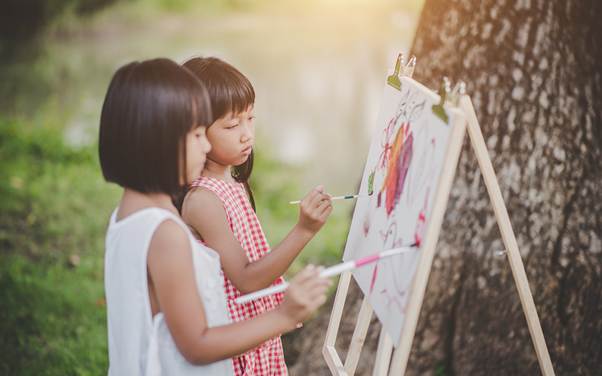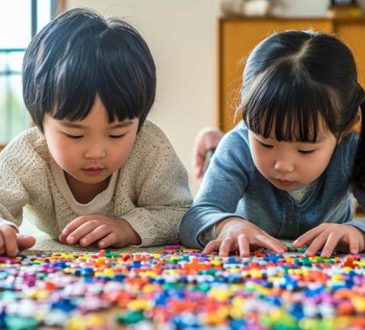
To most parents in Singapore, choosing the ideal early education centre is more than reading and writing. With a good Kovan preschool, there is a strong emphasis on a child’s developmental growth, whether it is cognitive, emotional, or social. One of the key but much-neglected areas of early education is daily interaction with art activities. These artistic experiences are so vital in moulding young minds and allowing children to express themselves freely.
Fostering Creativity and Imagination
Painting, which is a form of art, enables preschoolers to exercise their imagination and present an abstract concept in a physical medium. Painting, working with clay, or making paper animals presents children with opportunities to experiment beyond the confines of learning. While a worksheet is taught to illustrate a triangle, an art class invites children to transform the triangle into a sailboat, a mountain, or even the nose of a superhero. This kind of creativity enables kids to solve problems innovatively and acclimate to new situations confidently. In a learning atmosphere such as that at a Kovan childcare centre, where learning is intertwined with play, these opportunities become seamlessly integrated into the curriculum.
Building Fine Motor Skills
When the child holds a crayon, snips paper with safety scissors, or squeezes glue onto a surface, they are building small muscles in their fingers and hands. These actions are necessary for mastering handwriting, utensil use, and other skills for daily life. Art projects assist in perfecting these fine motor movements while keeping children stimulated and interested. In contrast to repetitive exercises, crafts provide purpose and result, encouraging young children to happily join in.
Heightening Emotional Expression
Young children do not yet have the vocabulary to express how they feel. In colours, shapes, and textures, art provides them with a very powerful non-verbal expression of emotion. An anxious child might paint a stormy sky, but one who is happy might splatter the entire canvas with bright colours. These expressions can be taken by teachers working in preschool as clues to the students’ emotional states and offering support accordingly. A caring environment, such as a preschool, guarantees that such observations are treated gently, making each child feel recognised and cared for.
Facilitating Social Development
Art activities also provide lessons in cooperation and sharing. Whether it’s waiting for one’s turn at the paint table or contributing to a collaborative collage, children learn to communicate their ideas and listen to other people. These are skills that will serve them well in group work later in life. In addition, sharing the work of others fosters respect for different points of view and appreciation for other forms of expression.
Encouraging Cognitive Development
The planning and doing of an art project pushes young brains to think critically and to solve problems. Choosing the colours to blend or how to construct a tall cardboard sculpture involves planning, trial and error, and revision. These thinking processes are closely associated with future academic achievement in courses such as maths and science. Preschoolers learn to make choices, anticipate outcomes, and analyse outcomes, all within a context of play and creativity.
Building Confidence and Independence
Finishing a piece of work makes children feel accomplished. Having their finished work displayed on the walls of their classroom or taking it home to share with family members reinforces pride. Praise from teachers and parents increases their confidence and inspires them to take on new challenges. This reinforcement is particularly important in early childhood, while attitudes towards learning are developing. In a well-organised Kovan childcare, teachers are equipped to provide constructive comments that build confidence while empowering children to move on.
Including Art in Daily Learning
Art need not be confined to individual sessions. It can be integrated into everyday lessons in language, science, and maths. For example, illustrating storyboards improves the skill of telling stories, while creating three-dimensional objects from nature reinforces environmental lessons. The aim is to make learning fun and memory-filled. When incorporated efficiently, art is an interactive vehicle that improves every aspect of a preschooler’s education.
Selecting a Preschool That Emphasises Creativity
Parents would do well to think about how a preschool incorporates art into its program when deciding. A well-rounded program that puts the same emphasis on creative experimentation as it does on scholastic beginnings lays the groundwork for a well-rounded education. Classrooms with good materials, plenty of room for display, and a curriculum featuring a balance of structured and free art play are signs of a strong program. A trusted Kovan preschool will prioritise these elements, recognising the lifelong benefits of fostering creativity from a young age.
Conclusion
Introducing art into a preschooler’s daily activities isn’t all play and games; it’s a vital part of their development. From motor skills to emotional expression and cooperation, art enhances their learning experience in innumerable ways. When selecting a learning environment, reflect on how effectively it encourages creativity and self-expression along with academics.
To find out more about enrolling your child in a centre that is committed to creative development, contact Little Seeds Preschool now.




